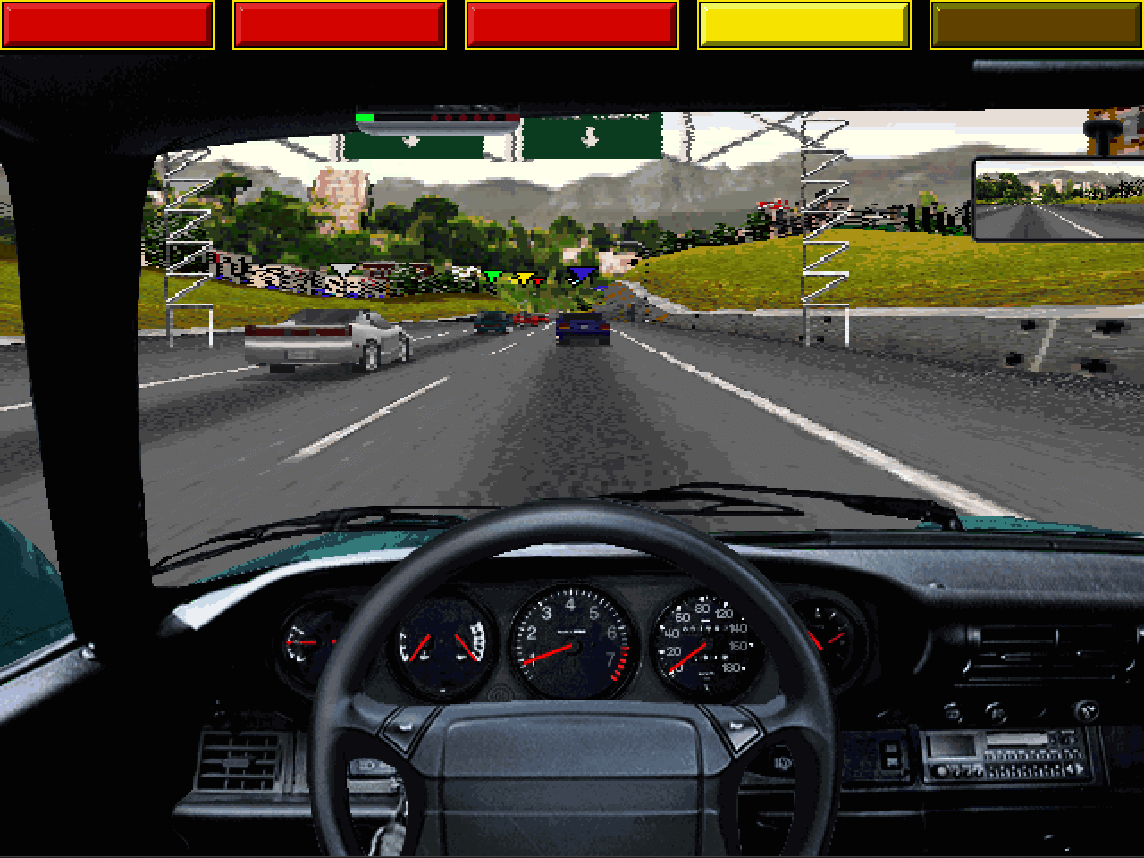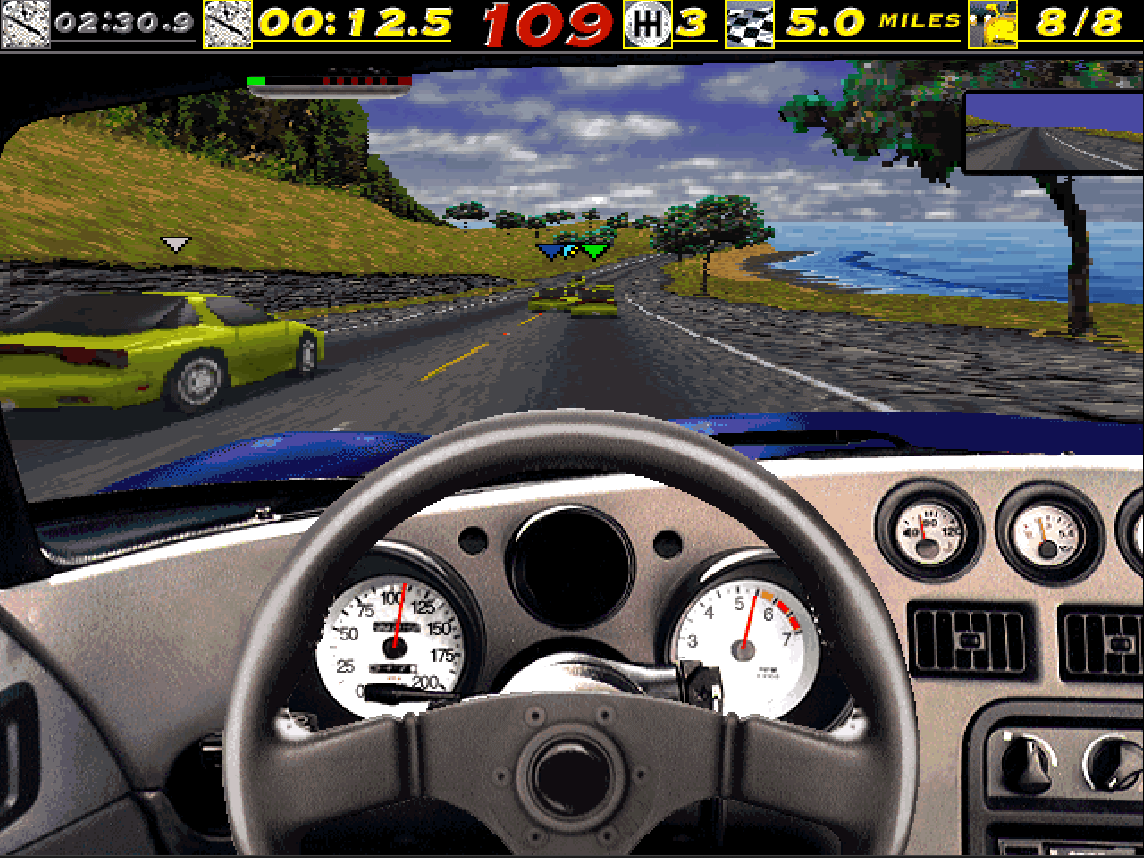Introduction
The Need for Speed, developed by EA Canada and published by Electronic Arts, marked its debut in 1994 on the 3DO platform.
This street racing masterpiece offers players the chance to take the wheel of eight licensed sports cars, navigating through three thrilling point-to-point tracks while contending with traffic, checkpoints, and relentless police pursuits.
The Evolution of The Need for Speed
After its initial release on 3DO, The Need for Speed ventured onto other platforms. In 1995, it made its way to MS-DOS, followed by releases on PlayStation and Sega Saturn in 1996.
These versions introduced additional tracks and cars, enhancing the gameplay. In Japan, the game adopted the title “Overdrivin’ DX,” while a Microsoft Windows edition was sold as The Need for Speed SE (Special Edition).
Realism Redefined
One of the standout features of The Need for Speed is its commitment to realism. Electronic Arts collaborated with the renowned automotive magazine Road & Track to ensure that vehicle behavior in the game closely mirrored reality. This attention to detail extended to replicating the sounds of the cars’ gear control levers.
Players will find precise vehicle data accompanied by spoken commentary. The game also offers a visual treat with several “magazine-style” images showcasing each car’s interior and exterior. Short video clips, set to music, highlight the vehicles, adding to the immersive experience.

Critical Acclaim and Legacy
The Need for Speed achieved commercial success upon its release. Gaming publications lauded its incorporation of realism into both gameplay and graphics, along with the inclusion of full motion videos.
It stands as the inaugural installment in the renowned Need for Speed series, setting a high standard for realism and influencing subsequent racing games.
Gameplay: An Adrenaline-Packed Experience
The heart of The Need for Speed lies in its exhilarating gameplay. Players have the opportunity to race a selection of sports cars, including exotic models and Japanese imports. The original 3DO version featured three point-to-point tracks, each divided into three stages.
Subsequent ports not only retained these point-to-point tracks but also introduced new closed circuits. Players must navigate through traffic vehicles, which can be skillfully avoided.
A unique gameplay element involves police pursuits. If a police car manages to catch up with the player, they receive a ticket or, on the third offense, get arrested. In the special edition, completing tournaments or using a cheat unlocks the “rally” mode, providing a faster and more arcade-like experience. Additionally, players gain access to the “Warrior PTO E/2,” an imaginary jet-powered sports car.
Each car in the game comes with detailed specifications, history, audio commentaries, and real-life videos. This depth in car information set a standard for the series. The game offers a replay feature, enabling players to review saved races. Multiple camera views, playback speed control, and video navigation enrich the experience.

Multiplayer Excitement
For those seeking competition, The Need for Speed provides a two-player head-to-head racing mode via modem-connected computers.
Diverse Racing Environments
The game boasts a total of six courses, each offering a unique and distinctive environment. City, Coastal, and Alpine tracks consist of three sections each, while Rusty Springs, Autumn Valley, and Vertigo are circuit races.
Players can unlock an additional track named Lost Vegas by conquering all other tracks in tournament mode, with a victory indicator in the menu to track their progress.
Conclusion
The Need for Speed represents an iconic chapter in the world of racing games. Its devotion to realism, impressive car roster, and challenging courses have solidified its place in gaming history.
Play The Need for Speed online
You can now experience this classic game The Need for Speed online for free on our platform, available for play in a web browser.

